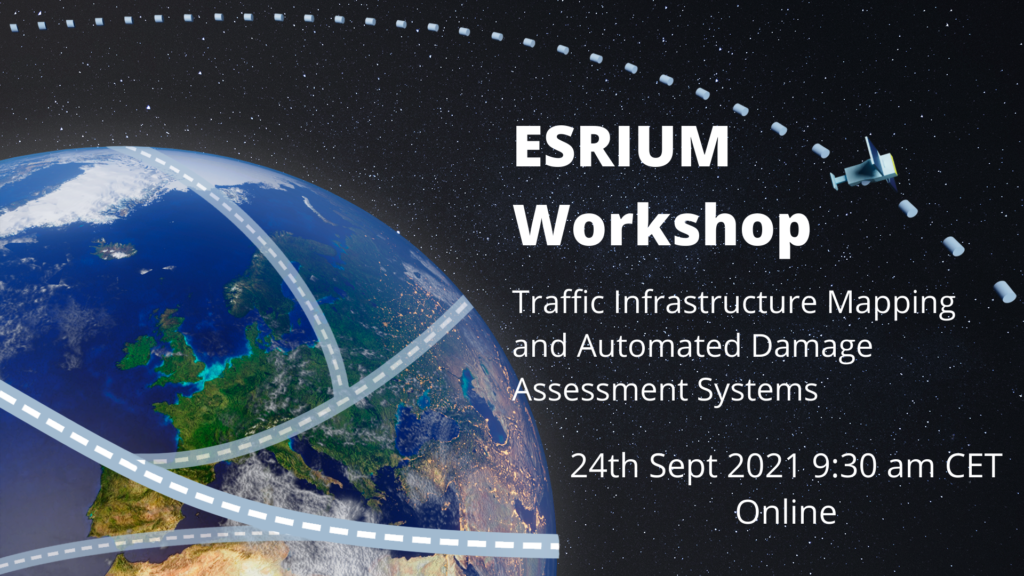ESRIUM Workshop on Traffic Infrastructure Mapping and Automated Damage Assessment Systems

In this online workshop organised within the 13th International Conference on Computer Vision Systems, the ESRIUM concept and product vision were presented and demonstrated with the alpha prototype. The main purpose was be to obtain relevant inputs that will guide further development.
In recent years, the automated digital capture of traffic infrastructure has gained importance. Apart from large-scale map providers, also automotive manufacturers and traffic infrastructure providers rely on digital spatial information for different purposes. There are two main drivers for this field of research:
- the need for precise spatial digital twins to enable simulation and driving functions, especially for autonomous mobility
- the need for predictive maintenance and asset management of infrastructure.
The range of modalities thereby spans from road over rail to naval mobility. This makes highly specialized mobile sensor systems necessary, which allow for large-scale data capture, high-precision geo-localization, automated 3D-modeling, segmentation and characterization of individual objects, as well as automated data and update management. Imaging sensors, be it cameras, LIDAR, radar or sonar, form the backbone of data capture and allow the application of computer-vision methods for pose estimation, large-scale 3D-modeling, object segmentation and damage detection. From a system perspective, diverse sensor data from profile and area-sensors needs to be synchronized and fused with precision geo-localization data. The resulting geo-referenced information needs to be cleaned, validated, stored and updated, which also calls for a high degree of automation.
The workshop aimed at exchanging research results on mobile data capture, automated data processing and data management systems with the purpose of digitizing traffic infrastructure and assessing their condition. Underlying sensor technologies may include cameras, radar, sonar, lidar, as well as complementary imaging systems. Data processing workflows and methodologies may focus on localization, data fusion, data cleaning, privacy and anonymization, 3D modeling, semantic understanding and defect detection.
Agenda
Matthias Rüther
JOANNEUM RESEARCH Forschungsgesellschaft mbH – Institute DIGITAL
Michaela Haberler-Weber
ÖBB-Infrastruktur AG
Yannick Wimmer
ASFINAG Autobahnen- und Schnellstraßen-Finanzierungs-Aktiengesellschaft
Manuel Walch
FH OÖ FORSCHUNGS & ENTWICKLUNGS GMBH
Richard Ladstädter and Matthias Rüther JOANNEUM RESEARCH Forschungsgesellschaft mbH – Institute DIGITAL
András Csepinszky
NNG Software Developing and Commercial
LLC
Yannick Wimmer
ASFINAG Autobahnen- und Schnellstraßen-Finanzierungs-Aktiengesellschaft
Selim Solmaz and Martin Rudigier
Virtual Vehicle Research GmbH
Matthias Rüther
JOANNEUM RESEARCH Forschungsgesellschaft mbH – Institute DIGITAL
relive our workshop
Password: &@DAi9K5